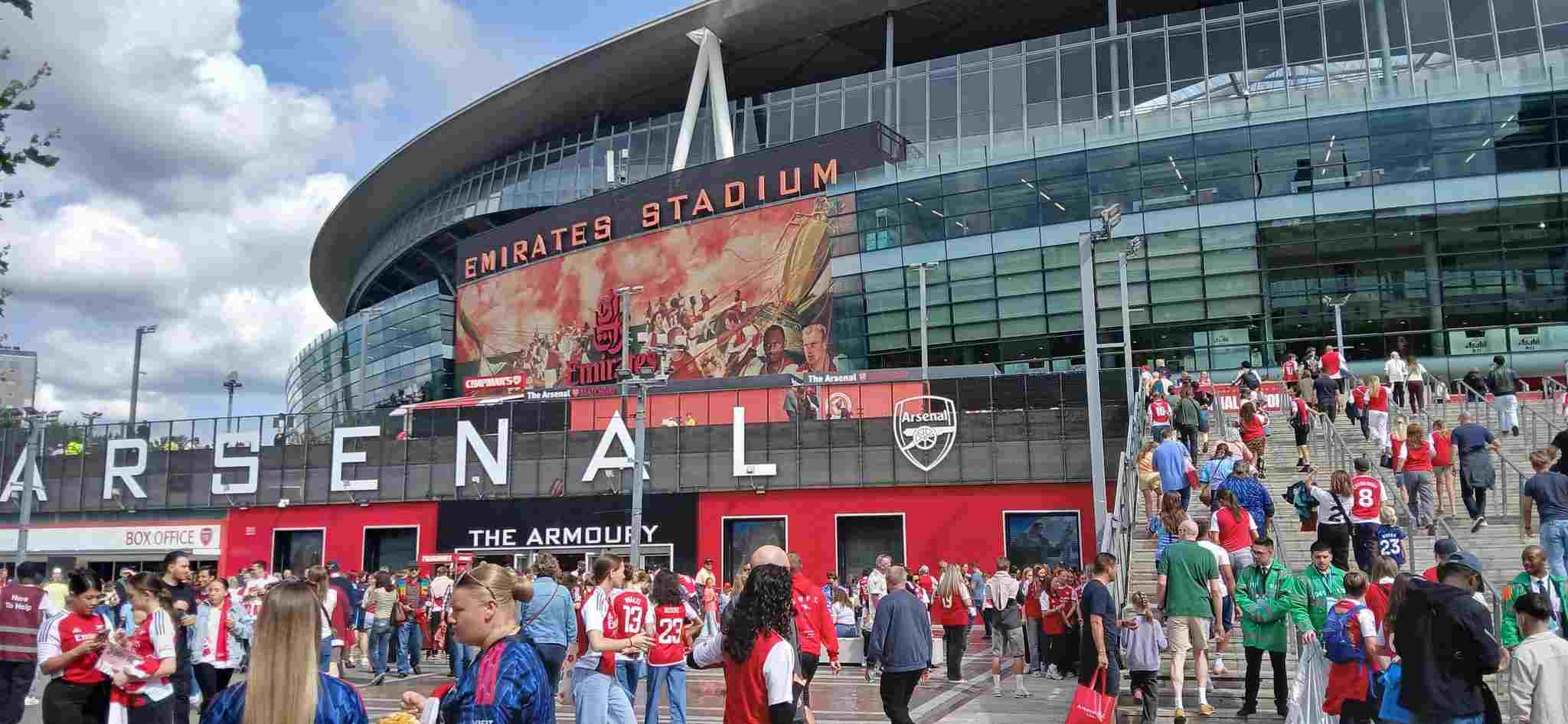

Key Takeaways:
- Arsenal have been exploring options to expand the Emirates Stadium beyond 70,000 seats, which would make it the largest club stadium in London
- Club officials have assessed redevelopment approaches inspired by Real Madrid’s £860m Santiago Bernabéu transformation, which doubled matchday revenues to €248m (£215m)
- Should expansion proceed, Arsenal may temporarily relocate to Wembley Stadium while work is carried out
Evaluating Emirates Expansion: Plans and Possibilities
Arsenal are considering an ambitious upgrade of the Emirates Stadium, drawing inspiration from Real Madrid’s redevelopment of the Santiago Bernabéu, as the club looks to strengthen its matchday income and set a new benchmark in London’s football infrastructure. When the Emirates officially opened in 2006, it boasted a 60,704 capacity, ranking second in the Premier League behind Old Trafford. However, subsequent years have seen other venues, including Anfield, the London Stadium, and the Tottenham Hotspur Stadium, overtake it in size.
🚨 Arsenal is advancing plans to expand Emirates Stadium to over 70,000 seats, potentially up to 80,000 by 2028. The £400-500m project, led by KSE and Populous, may see the Gunners temporarily relocate to Wembley for 12-18 months during construction. pic.twitter.com/poxKFEs0F5
— Arsenal Team (@_ArsenalTeam) October 7, 2025
Arsenal’s leadership is weighing several redevelopment strategies. These options include reshaping the gradient of existing stands, modifying or lowering the pitch, refurbishing individual sections of the ground, or constructing an additional seating tier atop the stadium. The central objective is to push capacity beyond 70,000 seats, ensuring that Emirates becomes the largest club stadium in the capital. Such a transformation would parallel the scale of Madrid’s recent Bernabéu renovation.
Learning from Madrid: Financial and Structural Impacts
Arsenal have examined the recent overhaul of Real Madrid’s iconic home, a project completed across five years at a total cost of £860m. The Santiago Bernabéu’s capacity was increased by around 4,000 seats to reach 83,186, while numerous state-of-the-art features – including a full 360-degree screen, a retractable roof, and a moveable pitch for non-football uses – were introduced.
Since these improvements, Real Madrid have reported a substantial increase in matchday revenue, which doubled to €248m (£215m) after the project’s completion. In contrast, Arsenal achieved matchday revenues of £131.7m over the 2023-24 season, an increase from the previous year’s £102.6m that coincided with a return to Champions League competition. The club’s hierarchy aims to mirror the revenue growth experienced in Madrid through similar enhancements at the Emirates.
| Stadium | Cost of Renovation | Duration | Capacity After Works | Revenue Impact |
|---|---|---|---|---|
| Santiago Bernabéu | £860m | 5 years | 83,186 | Matchday revenues doubled to €248m (£215m) |
| Emirates Stadium (planned) | — | — | Over 70,000 (targeted) | £131.7m reported for 2023-24 |
Temporary Relocation: Wembley on the Table
Pursuing major development at the Emirates could require Arsenal to stage home matches elsewhere for a period. The Wembley Stadium as a likely temporary venue. Tottenham previously used Wembley from the beginning of the 2017 campaign until late in 2018-19, as construction of their new home on the White Hart Lane site was finalised. Similarly, Real Madrid and Barcelona relocated during their own stadium overhauls. Los Blancos played at the Alfredo Di Stefano Stadium, albeit behind closed doors due to the Covid-19 pandemic.
Leadership and Strategic Appointments
Arsenal’s intentions to proceed with stadium expansion were underlined last month with the appointment of Otto Maly, a new non-executive board member with significant experience in elite sports construction and property development. Maly acts as president and director of special projects at Kroenke Holdings, and serves as chair of Maly Commercial Realty. He was instrumental in the delivery of Los Angeles’ SoFi Stadium – a 100,000-capacity venue that reportedly cost more than £4bn to construct and currently houses Stan Kroenke’s Rams – in his role as legal officer for operations and ownership. Earlier this year, Maly was also tasked with leading a £7.5bn redevelopment of a 100-acre Los Angeles site, which will feature a new Rams headquarters, apartments, retail facilities, and entertainment venues.




